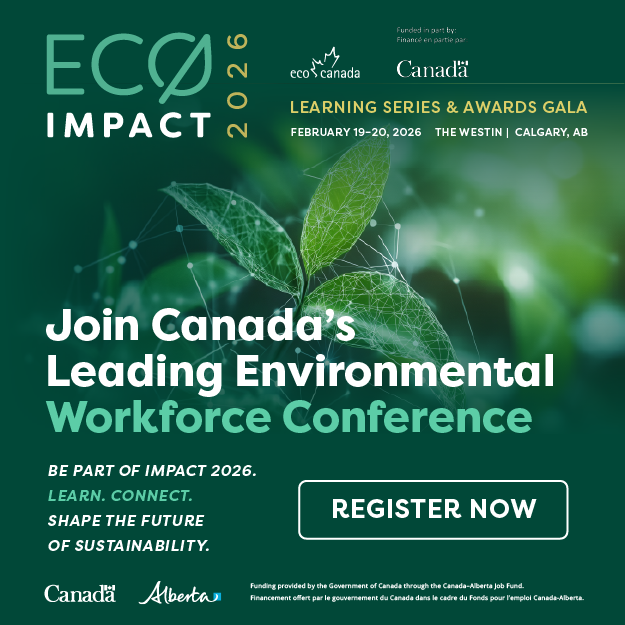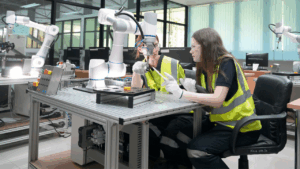What makes environmental sustainability jobs such an appealing field to work in?
I suspect one of the major attractions to this industry’s highly multi-faceted nature. Sustainability practitioners are rarely confined to just one area of expertise – instead, they must draw upon a range of different disciplines to come up with solutions that address environmental, economic and social needs.
Sustainability’s focus on interdisciplinary problem-solving might be a tall order to meet, but it’s also an exceptional opportunity. How many other professions allow you to make a positive difference across so many diverse areas?
Clearly, there’s a lot to look forward to in sustainability work. The real challenge is knowing where and how to get started. Students and professionals need detailed, relevant info on sustainability career trends, yet most available resources talk more about sustainability’s theory and impact, rather than its job prospects.
New research by ECO Canada is going to help change that. In our latest report, we looked at 7 top careers in sustainability, including a careful assessment of everything from average starting salaries to typical work settings. The findings from this research were then used to develop a new professional designation for environmental practitioners working in sustainability.
If you’ve ever wondered where sustainability professionals start or how much they typically make in Canada, we’ve got the answers to 5 of your most pressing questions:
1. What are the actual job opportunities in sustainability?
An impressive number of professionals currently work in sustainability. In fact, over 50,000 Canadian practitioners spend 50% or more of their time on activities related to economic, social and environmental sustainability.
Over the past two years, most job vacancies were for sustainability specialist positions, accounting for roughly 70% of Canada’s sustainability workforce.
In the next 3 – 5 years, 84% of sustainability consulting firms expect to hire, creating about 400 new positions. A further 3,800 new jobs will be added to this number as 46% of other sustainability employers increase their staff.
2. How do people get into this industry?
In our research, we found two distinct sustainability career paths. One path was for sustainability professionals. In this group, practitioners built their careers through degrees in business and public administration (32% of sustainability professionals), physical or life sciences (19%), engineering (13%), social sciences (13%) or natural resources and conservation (13%).
The other path was for a more specialized career as a sustainability consultant. For these roles, practitioners were less likely to have a business degree, and more likely to hold a degree in physical or life sciences (41% of sustainability consultants), engineering (32%) or natural resources and conservation (20%).
One other especially key finding of sustainability consultants: The majority of these practitioners (60%) were under the age of 35, demonstrating the appeal of sustainability consulting for new professionals with a sciences background.
If you’re interested in what a sustainable development career path looks like, take a look at our career profiles for sustainability jobs in the environmental sector.
3.What does a typical workday look like?
Like many other environmental careers, sustainability jobs can vary widely. For one of the most common sustainability careers – the sustainability specialist role – a typical day might encompass conducting online research on environmental regulatory updates, calculating the energy consumption for manufacturing a particular product, and presenting sustainability compliance report findings to clients, upper management or regulatory officials.
To be successful in their work, sustainability practitioners draw on a number of top skills, including:
- Interpreting, enforcing and complying with environmental regulations and standards
- Implementing and monitoring sustainable development strategies and programs
- Partnering with stakeholders
Interested in learning more about sustainability? Check out our sustainability series
4. Where can I find a career in sustainability?
About half of sustainability professionals are employed in private industry, while half are employed at government and not-for-profit organizations.
The top employers of sustainability professionals are governments (employing 27% of sustainability professionals), research institutions and not-for-profits (24%), large companies in manufacturing, oil & gas, mining, forestry and utilities (10%) and businesses in retail, finance and insurance (10%).
5. How much is the average starting salary for environmental sustainability careers?
This question is a major deciding factor when it comes to choosing a career that is not only rewarding but also financially viable. Keeping in mind that salaries vary significantly depending on the type of employer, experience level and occupation, we developed salary estimates through a series of interviews with sustainability practitioners.
For those working as sustainability specialists, the mean starting salary was about $40,650, with a high-end starting salary for more experienced workers at $50,700. Sustainability consultants typically started at a higher amount – $55,760 was the average base starting salary for this role.
Search for sustainability jobs and a career in sustainability on the ECO Canada job board.





